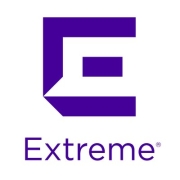LAN Switching is crucial for efficient data transmission within a local area network, enabling high-speed communication and resource sharing among connected devices. Its core function lies in directing data packets to their designated paths, optimizing network performance and reliability.
Effective LAN Switching solutions provide seamless interconnectivity among devices within a network through intelligent traffic management. They often incorporate data prioritization mechanisms to enhance network speed and efficiency. By deploying advanced switching technologies, businesses benefit from reduced congestion and improved bandwidth utilization, catering to the demands of modern networks.
What features stand out in LAN Switching solutions?In the healthcare industry, LAN Switching ensures timely access to critical patient data, supporting real-time communication and collaboration. In education, it facilitates seamless e-learning by managing high-volume data traffic efficiently, ensuring reliable connectivity for students and educators.
LAN Switching aids organizations by optimizing network resource utilization, ensuring consistent and reliable communication. It supports business growth by accommodating increased data demands, enhancing operational efficiency, and providing a competitive edge in digital environments.




















LAN switches connect all of the devices of a network over a small geographic area. They gather the data that is sent out by the connected devices. The switches also create temporary connections between devices that are attempting to send each other data. A LAN switch can employ one of three switching model types (delineated below) to determine whether the data in question should be passed along to its final destination.
The three methods used for LAN switching are:
Store-and-forward switching. This method takes every ethernet frame data packet and runs a cyclic redundancy check. If a cyclic redundancy is detected, the data is denied access. If there is no error, the data packet is sent to its intended target device.
Cut-through switching. This method only takes and checks the data’s intended MAC address. The first six bytes of the frame are what this network examines. This section of the frame is what helps the network decide whether or not it should forward the frame data packets.
Fragment-free switching. Fragment-free switching works in a very similar way to cut-through switching. However, unlike the six bytes that the previous method looks at, fragment-free switching looks at a minimum of 64 bytes. 64 bytes is the minimum size that can make up an ethernet frame.
When it comes to LAN switching, users can choose from two different types of LAN switching technologies: wired or wireless. When users employ wired LAN technologies, they make use of Ethernet cables, hubs, and switches. These wires, hubs, and switches create a physical infrastructure. Wireless LAN technology uses things such as microwave transmissions, radio waves, and the infrared portion of the light spectrum to convey data to the appropriate devices. These network technologies can be incorporated into larger networks.
Switched LAN architecture is the structure used to construct and describe the organization of the primary components of LAN networks. This structure is typically divided into 3 tiers. The lowest level is known as the “access” layer. This outermost layer connects directly to the devices being used by the network’s end users. It is in this layer that data is first gathered. The second layer is the “distribution” layer. This level takes the data from the “access “ layer and arranges it into categories. It is this layer that manages the traffic that is going on in the level below it. The servers of this level are more powerful than those of the “access” layer. The highest level is the “core” layer. This highest level is where the management of the network’s high-speed switching takes place. The servers that make up this level are the most powerful in the network.
Companies and organizations can enjoy the following benefits if they choose to employ LAN switches:
Features you should look for in LAN switches include:
Using VLANs in your LAN Switching architecture allows you to segment network traffic efficiently. This segmentation reduces broadcast domains, enhancing network performance by reducing unnecessary traffic. With VLANs, you can improve security, restricting access to specific segments and making network management simpler and more flexible. As a network professional, implementing VLANs means you have the capability to adapt to changing network demands effortlessly.
What role does Spanning Tree Protocol play in LAN Switching?Spanning Tree Protocol (STP) is crucial in preventing loops in your LAN Switching network, which can cause significant disruptions. By ensuring a loop-free topology, STP stabilizes your network infrastructure, allowing for redundant paths without the risk of broadcast storms. You should configure STP correctly to optimize device performance and ensure network reliability, especially when scaling your operations.
Why is Quality of Service important in LAN Switching?Quality of Service (QoS) is vital in prioritizing network traffic, ensuring critical applications are given precedence over less important data. By implementing QoS in your LAN Switching setup, you can maintain optimal performance for voice, video, and data services, reducing latency and jitter. This is particularly important in environments with high bandwidth demands, providing a smooth, uninterrupted experience for users.
How does Port Channeling enhance network capacity in LAN Switching?Port Channeling, or link aggregation, allows you to combine multiple physical links into a single logical link. This increases your network capacity and provides redundancy, which means if one link fails, traffic will automatically travel through the remaining links without interruption. By integrating Port Channeling into your LAN Switching strategy, you enhance bandwidth, improve reliability, and streamline network management.
What are the best practices for securing LAN Switching networks?Securing your LAN Switching network involves several best practices, such as implementing strong authentication and access control measures, enabling port security to prevent unauthorized devices, and using secure management protocols. Regularly update your switch firmware and apply network segmentation with VLANs to limit broadcast domains and control access. Monitoring traffic and performing security audits will help you proactively identify vulnerabilities and maintain a robust network defense.